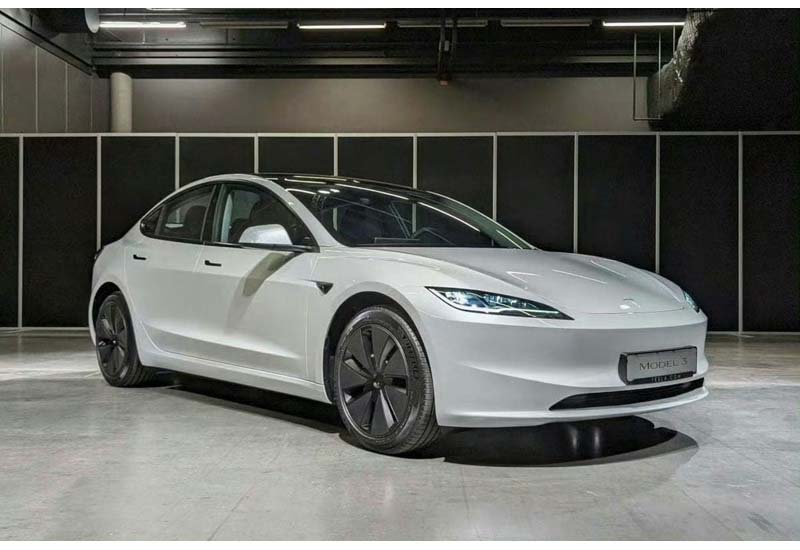Tesla Model 3 has secured the title of safest new car of 2025 in Euro NCAP’s latest testing round, achieving an outstanding score of 359 out of 400 points. Recognition comes under the organization’s more rigorous 2025 testing standards, which evaluate vehicles across enhanced safety criteria that reflect modern driving challenges and technological capabilities.
Achievement represents a significant milestone for Tesla’s safety engineering, particularly as Euro NCAP has tightened its evaluation protocols to address evolving automotive technologies and safety concerns. Model 3’s performance demonstrates the effectiveness of integrated safety systems working in harmony rather than as isolated components.
Model 3 delivered exceptional results across Euro NCAP’s four primary evaluation categories. Adult occupant protection scored 90%, while child occupant protection achieved an impressive 93%. Pedestrian safety reached 89%, and safety assist technologies earned 87% recognition.
Scores reflect the vehicle’s robust structural design and advanced safety systems working together to protect occupants and vulnerable road users. Testing protocol examines real-world scenarios that drivers encounter daily, making these results particularly relevant for consumers evaluating vehicle safety.
Model 3’s suite of advanced driver-assistance systems earned particular praise from Euro NCAP evaluators. Automatic Emergency Braking system demonstrated excellence across various scenarios, while Intelligent Speed Assistance and child presence detection received positive recognition from testing organizations.
Vehicle’s ability to identify vulnerable road users in complex situations, such as turning across opposing traffic, showcased the sophistication of Tesla’s sensor fusion and processing capabilities. Performance area has become increasingly important as traffic complexity continues to grow in urban environments.
Model 3’s crash structure and safety design elements contributed significantly to its top ranking. Pedestrian-friendly pop-up hood system activates during collisions to reduce injury severity, while the vehicle’s construction offers strong protection in both frontal and side impact scenarios.
Euro NCAP’s testing methodology examines how vehicles perform under various crash conditions, including offset impacts and side collisions that reflect real-world accident patterns. Model 3’s performance in these areas demonstrates the effectiveness of its safety architecture.
While celebrating the Tesla Model 3’s safety achievements, Euro NCAP issued cautionary notes about the Autopilot system. Regulators expressed concern that some drivers might overestimate the system’s capabilities, potentially leading to misuse or reduced attention during operation.
Among the 20 vehicles tested in Euro NCAP’s 2025 evaluation round, 14 earned five-star ratings, but none matched the Tesla Model 3’s consistency across all categories. Volkswagen ID.7, Polestar 3, and Geely EX5 performed well but couldn’t achieve the same level of excellence.
Several popular models, including the Kia EV3, MG ZS, and Renault 5, fell short of the highest safety ratings. Performance gap highlights Model 3’s engineering advantages and the challenges other manufacturers face in achieving comprehensive safety excellence.
Tesla’s FSD Supervised system, considered the company’s most advanced safety platform, has yet to receive regulatory approval for European deployment, FSD tackles Amsterdam chaotic streets. When authorized, this technology is expected to enable Model 3 to operate in urban environments with minimal driver input.
Approval process for advanced driving systems varies by region, with European regulators maintaining stringent evaluation criteria. Tesla’s FSD Supervised system represents the next evolution in automotive safety technology, pending regulatory clearance.
Related Post
Stockholm Denies Tesla FSD Testing Despite European Expansion in Paris, Amsterdam and Rome
Tesla Launches Actually Smart Summon in Europe: Your Car Now Drives to You
